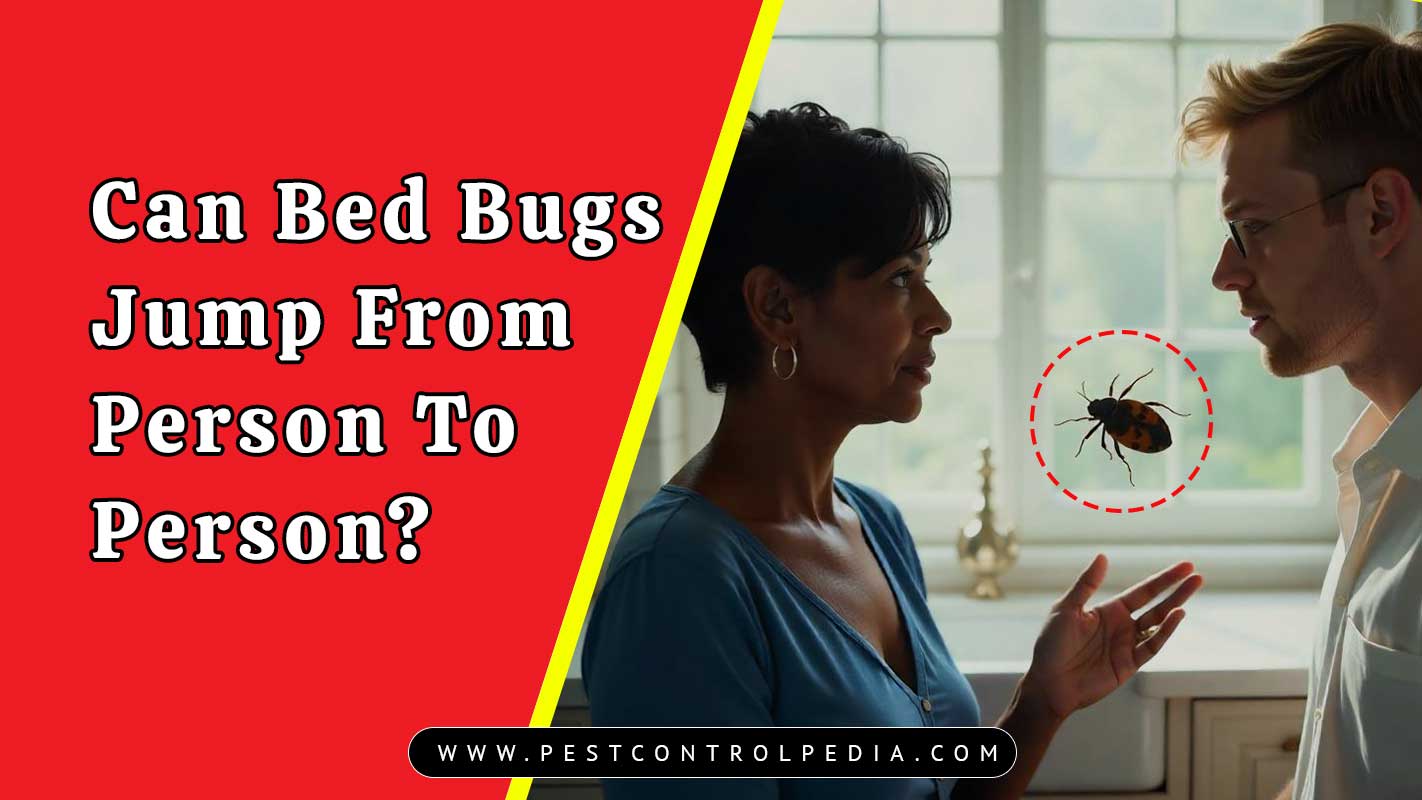Have you ever found yourself wondering about those tiny creatures that seem to invade your space at night? The question of whether bed bugs can jump is more common than you might think. As we explore this topic, you'll discover some surprising facts about these elusive insects.
Many people believe that bed bugs can leap from one surface to another, but is that really the case? Understanding their behavior is essential for anyone looking to protect their home from a bed bug infestation. Let’s dive deeper into the world of these pests.
In this article, we will answer the burning question: Can Bed Bugs Jump? Along the way, we’ll also share valuable tips on prevention and treatment, ensuring you have the knowledge to keep your living space comfortable and safe.
Discover the truth about bed bugs and their jumping abilities. Join us on this journey to uncover the secrets of these pests and learn how to safeguard your home.
Table of Contents
ToggleCan Bed Bugs Jump?
Understanding Bed Bug Anatomy
To determine whether bed bugs can jump, we first need to look at their physical structure. These tiny insects have a flat, oval shape that allows them to hide in small crevices. However, this design limits their mobility.
Limitations of Jumping Ability
Unlike some insects that can leap great distances, bed bugs lack the necessary adaptations for jumping. Their legs are designed for crawling rather than propelling themselves into the air. Here are a few reasons why:
- Body structure: Bed bugs have a heavy, flattened body that makes jumping impractical.
- Leg strength: Their legs are not built for the explosive power needed for jumping.
- Movement style: Bed bugs prefer to crawl quickly to find shelter and food.
Evidence Against Jumping
Research and observations consistently show that bed bugs do not possess the ability to jump. Instead, they rely on crawling to navigate their environment. This behavior helps them find hosts and avoid detection effectively.
In summary, bed bugs cannot jump. Their movement is limited to crawling, which is a crucial aspect of their survival strategy. Understanding this fact can help in managing and preventing bed bug infestations in your home.
How Do Bed Bugs Move?
Crawling: The Primary Mode of Movement
Bed bugs are not equipped for jumping, so they rely on crawling as their primary means of movement. This crawling ability allows them to navigate various surfaces in search of food and shelter.
Speed and Agility
Despite their small size, bed bugs can move quite quickly. They can cover several feet in just a few minutes, which is crucial for avoiding detection by their hosts. Here are some key points about their movement:
- Speed: Bed bugs can travel up to 4 feet per minute, making them efficient at finding hosts.
- Agility: They can easily maneuver through tight spaces, such as cracks and crevices in furniture.
- Climbing: Bed bugs are excellent climbers, able to scale walls and even ceilings to reach their next meal.
Finding Hosts
Bed bugs are attracted to warmth and carbon dioxide, which helps them locate potential hosts. Once they sense a nearby human or animal, they will crawl towards them to feed. This behavior is essential for their survival.
Hiding and Seeking Shelter
After feeding, bed bugs often retreat to their hiding spots to digest their meal. They prefer dark, secluded areas, which makes it challenging to detect them. Common hiding places include:
- Mattresses and box springs
- Bed frames and headboards
- Cracks in walls and furniture
In conclusion, bed bugs rely solely on crawling to move around. Their speed, agility, and ability to find shelter play a critical role in their survival and ability to thrive in human environments.
Preventing Bed Bug Infestations
Importance of Prevention
Preventing bed bug infestations is crucial for maintaining a comfortable living environment. These pests can multiply quickly, making early detection and prevention essential for avoiding larger problems down the line.
Regular Inspections
Conducting regular inspections of your home can help identify bed bugs before they become a significant issue. Focus on areas where bed bugs are likely to hide, such as:
- Mattresses: Check seams and folds for signs of bed bugs.
- Furniture: Inspect upholstered furniture and any cracks in wooden pieces.
- Baseboards: Look for droppings or shed skins along baseboards and walls.
Using Mattress Encasements
Investing in high-quality mattress encasements can provide an effective barrier against bed bugs. These encasements trap any existing bugs and prevent new ones from entering. Ensure that they are:
- Durable and puncture-resistant
- Waterproof to protect against spills
- Easy to clean and maintain
Decluttering Your Space
Reducing clutter in your home can significantly lower the risk of bed bug infestations. A tidy environment makes it easier to spot potential hiding places. Consider these tips:
- Store items in sealed containers
- Regularly clean and vacuum your home
- Minimize the number of items under your bed
Travel Precautions
When traveling, be vigilant about bed bugs in hotels or other accommodations. To protect yourself, follow these guidelines:
- Inspect your room upon arrival, especially the bed and furniture
- Keep luggage off the floor and bed
- Wash and dry clothes on high heat when returning home
In summary, taking proactive measures to prevent bed bug infestations is essential for a comfortable living space. Regular inspections, using mattress encasements, and maintaining cleanliness can help keep these pests at bay.
Treating Bed Bug Infestations
Identifying the Infestation
The first step in treating a bed bug infestation is to confirm their presence. Look for signs such as bites on your skin, small blood stains on sheets, or tiny dark spots, which are bed bug droppings.
Heat Treatment
One of the most effective methods for eliminating bed bugs is heat treatment. This process involves raising the temperature in infested areas to a level that is lethal to bed bugs. Key points include:
- High temperatures: Bed bugs die at temperatures above 120°F (49°C).
- Professional equipment: Specialized heaters are often required for effective treatment.
- Thorough coverage: Ensure all areas, including hidden spots, are treated.
Chemical Treatments
Chemical treatments can also be effective in managing bed bug infestations. Various insecticides are available, but it is essential to choose products specifically labeled for bed bugs. Consider the following:
- Residual insecticides: These provide lasting protection by remaining effective after application.
- Contact insecticides: These kill bed bugs on contact but may not reach hidden populations.
- Follow instructions: Always adhere to the manufacturer's guidelines for safe and effective use.
Steam Cleaning
Steam cleaning is another effective method for treating bed bugs. The high temperature of steam can kill bed bugs on contact. Here are some tips for steam cleaning:
- Use a steamer: Ensure the steamer reaches at least 200°F (93°C).
- Focus on seams: Pay special attention to mattress seams and upholstery.
- Follow up: Combine steam cleaning with other methods for comprehensive treatment.
Professional Pest Control Services
If the infestation is severe, it may be best to seek help from professional pest control services. These experts have the experience and resources to effectively eliminate bed bugs. Benefits of hiring professionals include:
- Thorough inspections: Professionals can identify all infested areas.
- Integrated pest management: They often use a combination of methods for effective treatment.
- Long-term solutions: Professionals can provide guidance on preventing future infestations.
In conclusion, treating bed bug infestations requires a multi-faceted approach. Whether using heat treatment, chemical solutions, or professional services, addressing the problem promptly is vital for restoring comfort to your home.
Frequently Asked Questions (FAQs)
Q. Can bed bugs jump from one person to another?
A. No, bed bugs cannot jump from one person to another. They rely on crawling to move around and find hosts. Jumping is not a behavior they exhibit.
Q. Can bed bugs jump from one room to another?
A. No, bed bugs cannot jump between rooms. They may crawl through small cracks and crevices to move from one area to another, but jumping is not possible due to their physical limitations.
Q. Can bed bugs jump off walls?
A. No, bed bugs cannot jump off walls. While they are excellent climbers and can scale walls, they do not possess the ability to jump. Their flat bodies and weak legs prevent them from leaping off surfaces.
Q. Can bed bugs jump on you?
A. No, bed bugs cannot jump onto you. They rely on crawling to find hosts and feed. If a bed bug is on you, it likely crawled there from an infested area nearby.
Q. Can bed bugs jump on furniture?
A. No, bed bugs cannot jump onto furniture. They may crawl onto furniture, especially if it is near an infested area, but they cannot propel themselves through the air to reach it.
Q. Can bed bugs jump high?
A. No, bed bugs cannot jump high. Their physical structure and lack of leg strength prevent them from leaping significant distances. They are limited to crawling along surfaces.
Q. Can bed bugs jump from one bed to another?
A. No, bed bugs cannot jump from one bed to another. They may crawl between beds if they are in close proximity, but jumping is not a viable method of transportation for these insects.
Q. Can bed bugs jump far?
A. No, bed bugs cannot jump far. Their flat bodies and weak legs make it impossible for them to propel themselves over long distances. Jumping is not a behavior they exhibit, even for short hops.
Q. Can bed bugs jump on you while you sleep?
A. No, bed bugs cannot jump onto you while you sleep. They may crawl onto you if you are in close proximity to an infested area, but they cannot jump or leap onto you.
Q. Can bed bugs jump to avoid being killed?
A. No, bed bugs cannot jump to avoid being killed. They rely on hiding in cracks and crevices to evade detection. Jumping is not a defense mechanism they possess.
Conclusion
In this article, we explored the question: Can bed bugs jump? The answer is clear—bed bugs cannot jump. Their movement is limited to crawling, which plays a significant role in their behavior and survival.
Understanding Bed Bug Behavior
Understanding how bed bugs move and their inability to jump is crucial for effective prevention and treatment. By recognizing their crawling habits, you can better protect your home from potential infestations.
Importance of Prevention and Treatment
Preventing bed bug infestations requires vigilance and proactive measures. Regular inspections, using mattress encasements, and maintaining cleanliness are essential strategies. If an infestation occurs, prompt treatment is vital to restore comfort.
Stay Informed and Vigilant
Knowledge is your best defense against bed bugs. Staying informed about their behavior and treatment options will empower you to take action when necessary. Awareness can help you maintain a bed bug-free environment.
Final Thoughts
In conclusion, while bed bugs may not jump, their presence can still be a significant nuisance. By understanding their habits and taking preventive measures, you can ensure your home remains a safe and comfortable space.


